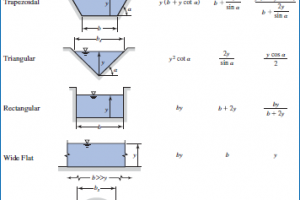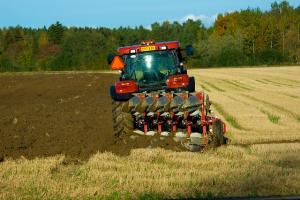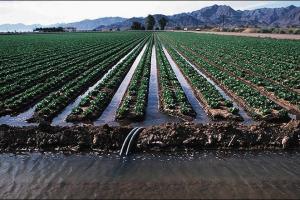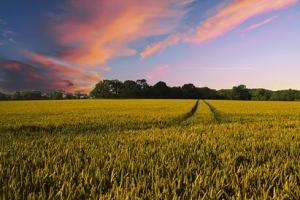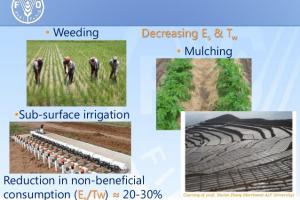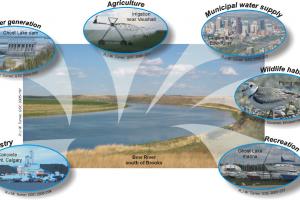Irrigation Efficiency - Definition and Its Types
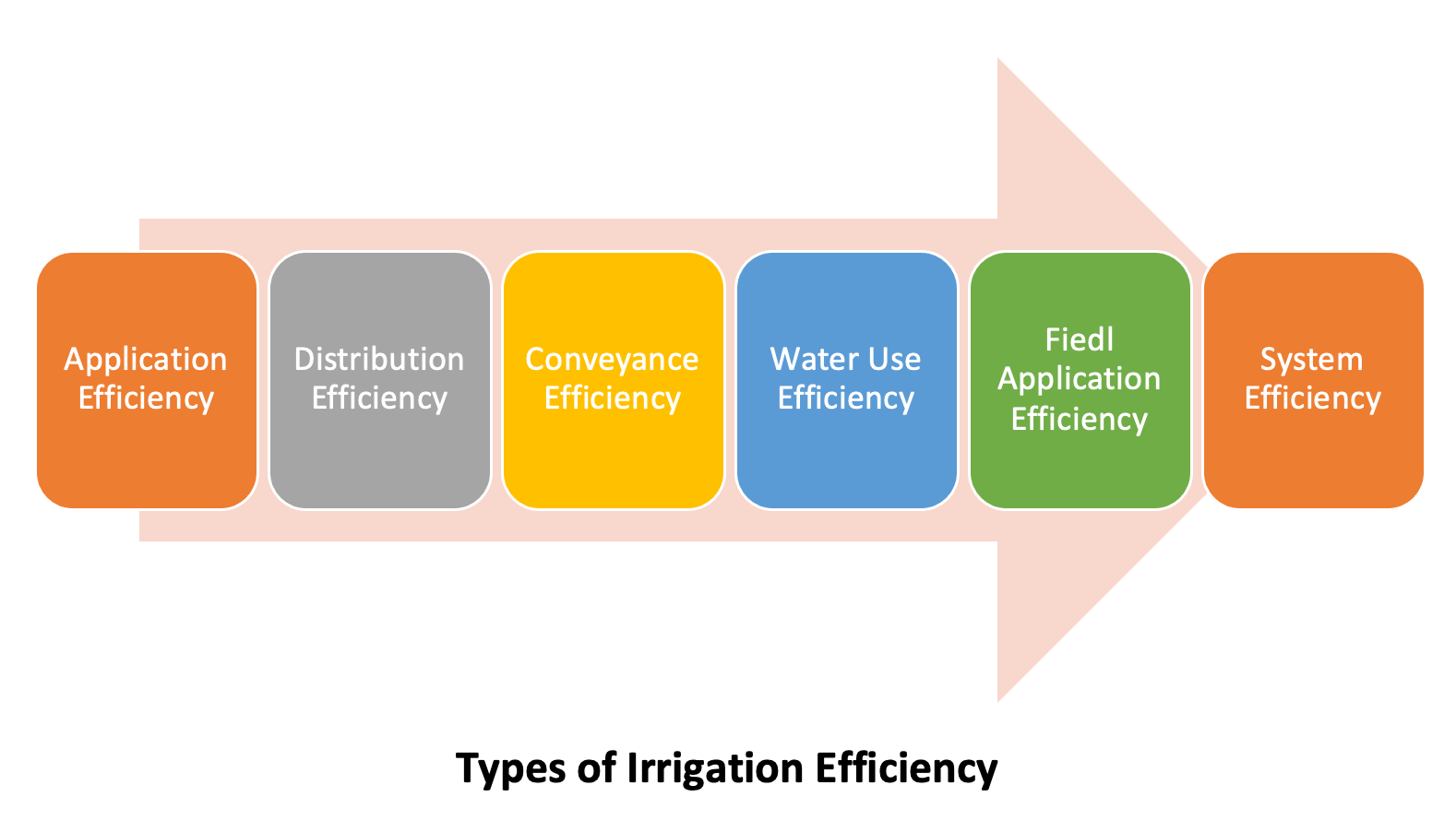
Definition
Efficient irrigation practices are crucial for sustainable agriculture, particularly in regions where water resources are limited or subject to increased demand. Maximizing irrigation efficiency helps minimize water wastage, conserve resources, and improve crop productivity. In this article, we will delve into various types of irrigation efficiency and their significance in optimizing water use in agricultural systems.
Definition of Irrigation Efficiency
The ratio of the amount of water available (output) to the amount of water supplied (input) is known as Irrigation Efficiency. It is expressed in percentage.
Types of Irrigation Efficiency
The following are the various types of irrigation efficiencies:
(a) Water Conveyance Efficiency (ηc):
Conveyance efficiency focuses on minimizing losses during water transport from the source (such as reservoirs or canals) to the irrigation site. It considers losses due to seepage, leakage, evaporation, and system inefficiencies. Proper maintenance of conveyance structures, lining canals, and using efficient water conveyance methods (e.g., closed pipes instead of open channels) can significantly improve conveyance efficiency.
It is the ratio of the amount of water applied, to the land to the amount of water supplied from the reservoir. It is obtained by the expression,
ηc = Wl Wr × 100 Where, ηc = Water conveyance efficiency Wl = Amount of water applied to land Wr = Amount of water supplied from reservoir
(b) Water Application Efficiency (ηa):
Field application efficiency measures the proportion of water delivered to the field that is effectively utilized by the crops. It considers losses from deep percolation, runoff, and non-beneficial evaporation. Techniques such as soil moisture monitoring, scheduling irrigation based on crop needs, and employing water-saving practices like mulching can enhance field application efficiency by minimizing water losses and ensuring efficient water uptake by plants.
It is the ratio of the water stored in the root zone of plants to the water applied to the land. It is obtained by the expression,
ηa = Wz Wl × 100 Where, ηa = Water application efficiency Wz = amount of water stored in root zone Wl = Amount of water applied to land
(c) Water Use Efficiency (ηu):
Water use efficiency evaluates the amount of crop yield achieved per unit of water applied. It is a measure of the productivity of water use in agriculture. High water use efficiency is achieved by selecting appropriate crop varieties, optimizing irrigation scheduling, practicing efficient nutrient management, and adopting modern farming techniques. Additionally, employing technologies like remote sensing, precision agriculture, and water-efficient irrigation systems can further enhance water use efficiency.
It is the ratio of the amount of water used to the amount of water applied. It is obtained by the expression,
ηu = Wu Wl × 100 Where, ηu = Water use efficiency Wu = Amount of water used Wl = Amount of water applied to land
(d) Consumptive use Efficiency (ηcu):
It is the ratio of the consumptive use of water to the amount of water depleted from the root zone. It is obtained by the expression, ηcu = Cu Wp × 100 Where,
ηcu = Consumptive use efficiency Cu = Consumptive use of water Wp = Amount of water depleted from root zone
(e) System Efficiency:
System efficiency refers to the overall efficiency of the entire irrigation system, including conveyance, distribution, and application components. It considers losses at each stage of the irrigation process, from water sources to crop root zones. Regular system maintenance, proper design, periodic inspections, and prompt repairs are crucial for achieving high system efficiency. Upgrading to modern, water-saving technologies and utilizing advanced irrigation management tools can also contribute to improved system efficiency.
(f) Distribution Efficiency:
Distribution efficiency measures the uniformity of water application across the irrigated area. It assesses how evenly water is distributed, accounting for variations in soil types, topography, and system design. Uneven distribution can lead to over watering in some areas and under-watering in others, affecting crop health and yield. Well-designed irrigation systems with uniform water distribution ensure that each plant receives the required amount of water for optimal growth.





